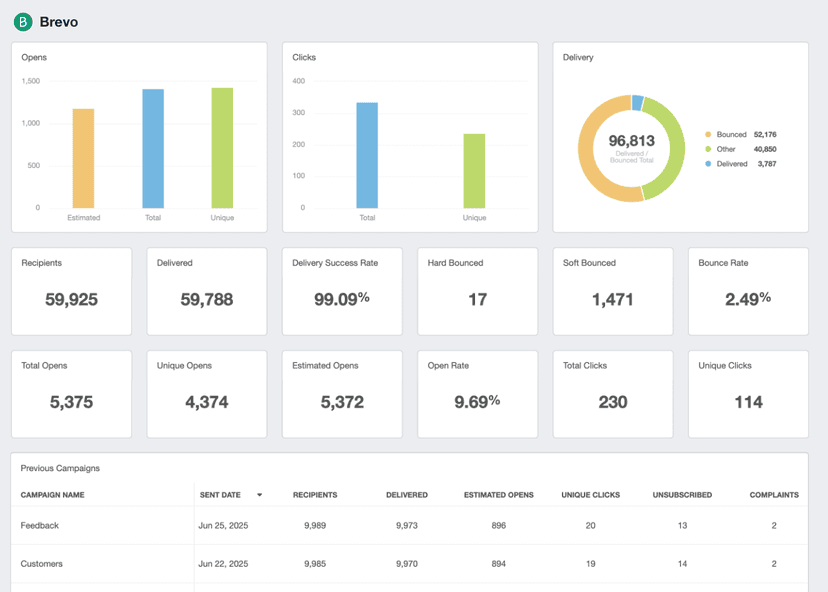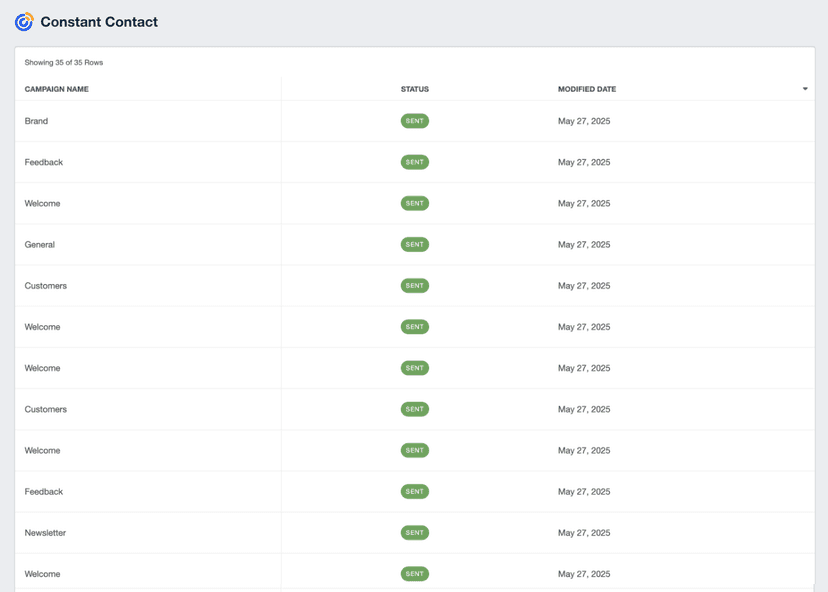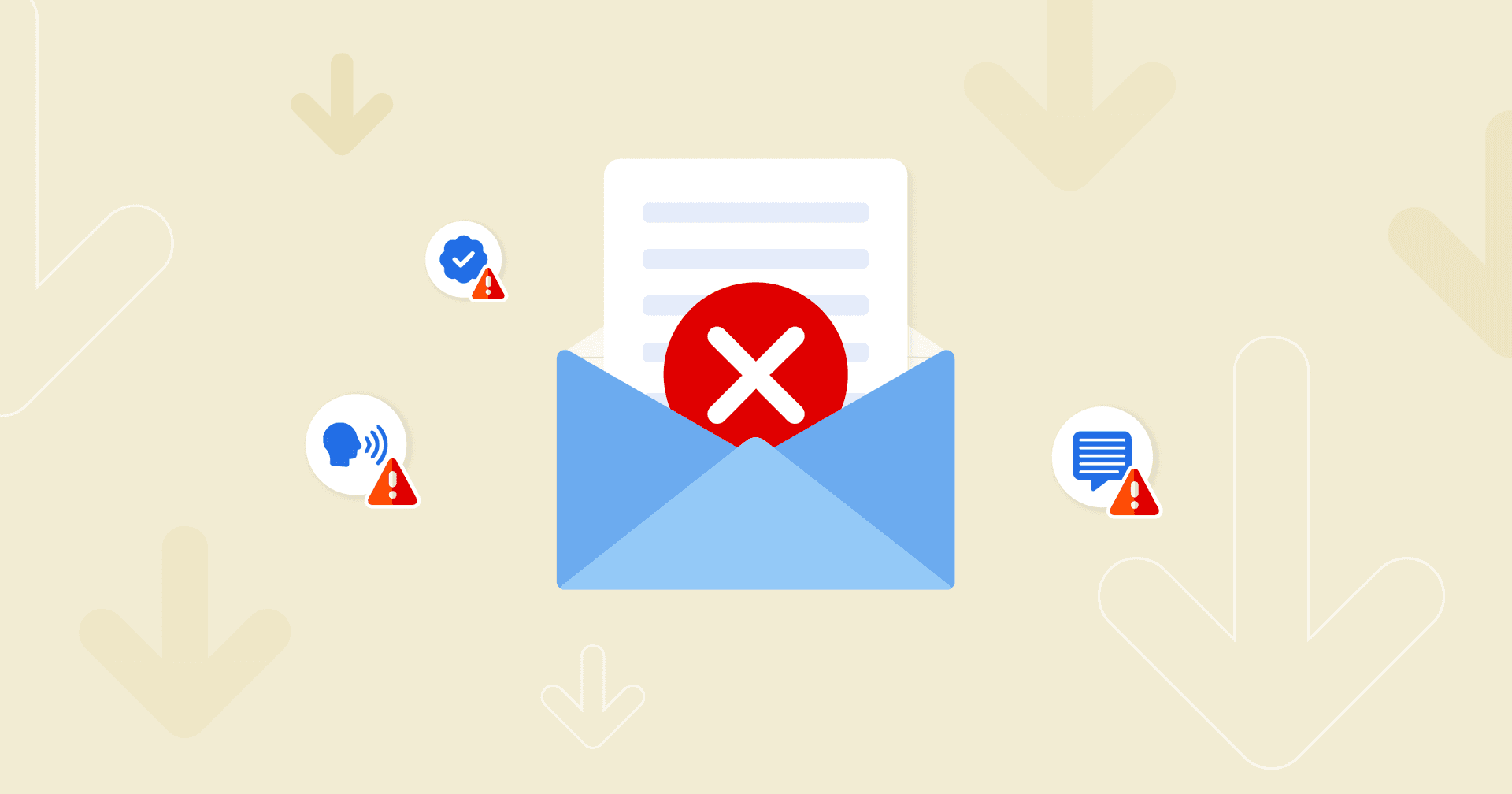Email Bounce Rate
List Hygiene
Streamline email lists by removing non-functional addresses.
Reputation Monitoring
Ensure a good sender reputation for better email placement.
Client Reports
Demonstrate campaign effectiveness in client reports, underscoring the agency's performance.
Error Diagnosis
Pinpoints issues in email campaign deliverability for targeted improvements.
Why Email Bounce Rate Is Important
Email Bounce Rate is a pivotal metric to measure for clients. It directly reflects the health of email campaigns and the effectiveness of the communication with the audience. When emails bounce, they fail to reach the intended recipients. This could have a variety of causes, including invalid email addresses or a recipient's inbox being full.
Tracking Email Bounce Rate matters for many reasons, such as indicating the quality of the email list. High Bounce Rates signal that it's time to clean up the lists, ensuring the agency is not wasting resources on unresponsive or non-existent contacts. A lower Email Bounce Rate also leads to better email deliverability, helping messages land where they should–in subscribers' inboxes.
Additionally, Email Bounce Rate impacts a sender's reputation. High Bounce Rates negatively affect how email service providers perceive a domain, potentially causing future emails to be marked as spam.
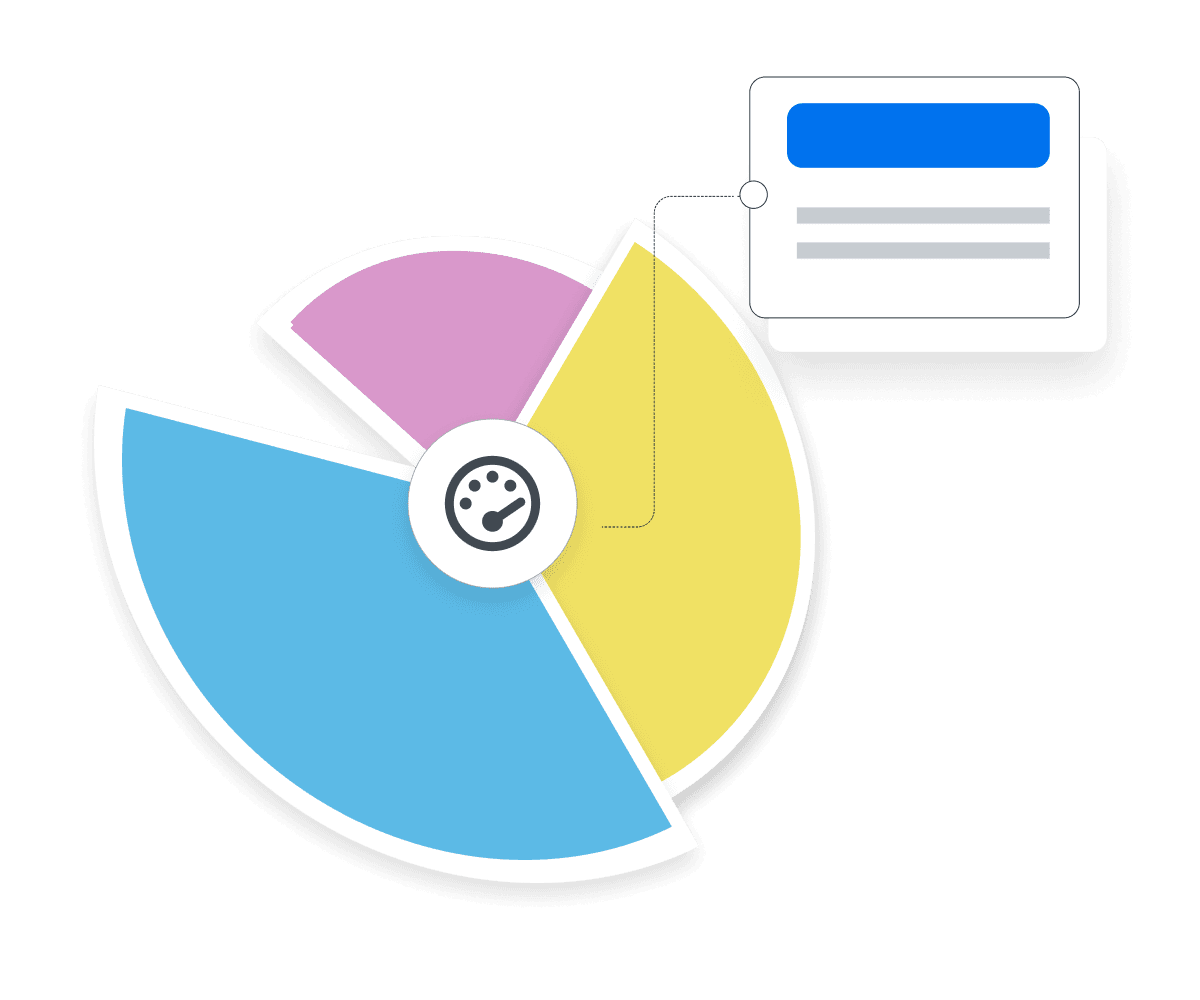
Stop Wasting Time on Manual Reports... Get Email Insights Faster With AgencyAnalytics
How Email Bounce Rate Relates To Other KPIs
Email Bounce Rate is an important part of the larger picture of marketing KPIs and impacts various aspects of campaign performance.
One of its direct connections is with Open Rate. When email bounces are high, Open Rates naturally suffer since those bounced emails are never opened. Tracking both metrics together provides a more accurate picture of how well the email messages are resonating with the audience.
Email Bounce Rate also ties closely to Conversion Rate. High Bounce Rates can hinder conversions because if the emails don't reach the intended inbox, they won't lead recipients to take desired actions. Keeping Email Bounce Rate in check helps improve the overall conversion performance of campaigns.
Additionally, it influences Sender Reputation. Email service providers closely monitor Bounce Rates to assess the trustworthiness of a sender's domain. A poor sender reputation leads to emails being filtered as spam, impacting Click-Through Rate and Email Engagement.

Soft Bounce vs. Hard Bounce: What's the Difference?
When monitoring email marketing campaigns, it's essential to be aware of two primary types of bounces: soft bounce and hard bounce. A soft bounce occurs temporarily, often due to issues with the recipient's email server, such as a full inbox or server downtime. In contrast, a hard bounce indicates a more severe problem, like invalid email addresses or being blocked by spam filters.
The email marketing platform used will typically differentiate between these bounces, aiding in understanding how the Email Bounce Rate is calculated. Maintaining a low average Bounce Rate is crucial, and recognizing the difference between a soft bounce and a hard bounce helps in optimizing for valid recipient email addresses and ensuring successful email delivery.

How To Calculate Email Bounce Rate
Use this calculation to gauge the health of an email list and the effectiveness of email campaigns. Aim for a low Email Bounce Rate calculated over time to ensure the messages reach their intended recipients.
Email Bounce Rate Formula Example
What Is a Good Email Bounce Rate?
A good average Email Bounce Rate typically falls within the range of 2% to 5%. This indicates that the email campaigns are reaching a high percentage of the intended recipients and that the list is well-maintained.
What Is a Bad Email Bounce Rate?
On the other hand, a bad average Email Bounce Rate is usually above 5%. A high Bounce Rate suggests issues with the email list quality or campaign strategy, impacting the overall email marketing effectiveness.
How To Set Email Bounce Rate Benchmarks and Goals
Analyzing past email performance establishes realistic targets and measures progress more accurately.
To hit growth targets, marketers often back-calculate the desired Email Bounce Rate based on the current benchmarks, strategies being implemented to improve list health, and the desired traffic and conversions from email campaigns.
To dig even deeper, break down Bounce Rates into categories like soft bounces (temporary issues) and hard bounces (permanent issues) or by the email acquisition source. This helps pinpoint specific problems in the email list and campaign strategy, enabling targeted improvements for better results.
Why Email Bounce Rate Matters to Clients
Email Bounce Rate is more than just a percentage in a marketing report; it's a reflection of a client’s return on investment.
A low Email Bounce Rate means that their marketing messages are reaching a larger, more engaged audience. This translates to higher chances of conversions, increased sales, and a healthier bottom line.
Clients value Email Bounce Rate as a key metric because it directly affects their revenue and the effectiveness of their marketing campaigns. It's a tangible indicator of how well their marketing agency is delivering results and driving ROI.

Why Email Bounce Rate Matters to Agencies
Monitoring Email Bounce Rate helps with email campaign optimization and overall client satisfaction. This is a crucial metric that allows agencies to showcase their expertise and demonstrate value to clients.
By closely analyzing and managing Email Bounce Rate, agencies ensure that their email campaigns are reaching valid email addresses and performing at their best, achieving higher deliverability rates, and ultimately improving client retention.
A low Bounce Rate not only enhances the agency's reputation but also signifies their commitment to delivering quality results. It's a metric that keeps agencies on the path to success and client satisfaction, making it a metric that cannot be ignored.

Win Back Billable Hours by Automating Your Client Reporting
Best Practices When Analyzing and Reporting on Email Bounce Rate
A comprehensive analysis of Email Bounce Rate helps marketing agencies create more effective advertising campaigns. Examine this metric from various angles to gain insights that lead to refined strategies and better results. Clear and concise reporting helps clients understand the impact of this metric on their large-scale campaigns.
Analyze Email Bounce Rate Over Time
Tracking Email Bounce Rate trends over time allows marketers to identify patterns, such as seasonal variations or long-term improvements. This helps in adapting strategies for maximum impact.
Assess Email Bounce Rate Across Campaigns
Analyzing Email Bounce Rates for individual campaigns highlights what's working and what's not. Marketers replicate successful tactics and refine strategies for underperforming campaigns.
Interpret Trends and Anomalies
Identifying unusual fluctuations or anomalies in Email Bounce Rate uncovers potential hidden issues. It's an opportunity to investigate and rectify problems before they impact larger campaign performance.
Put Email Bounce Rate in Context
To provide a holistic view, put Email Bounce Rate in the context of other relevant KPIs, like Open Rate and Conversion Rate. This shows clients how Bounce Rate fits into the bigger picture of campaign success, offering insights into areas that may need optimization.
Align to Client Goals
Connect the dots on how maintaining a low Bounce Rate enhances deliverability, and engagement and helps achieve larger marketing goals. This ensures clarity in reporting and strengthens the value of Email Bounce Rate as a performance indicator.
Visualize Email Bounce Rate Performance
Utilize visual aids such as charts or graphs to make Email Bounce Rate data easily digestible. Visualizations enable clients to quickly grasp trends and anomalies, facilitating data-driven decision-making that informs the agency's email marketing strategies.
MailChimp Dashboard Example
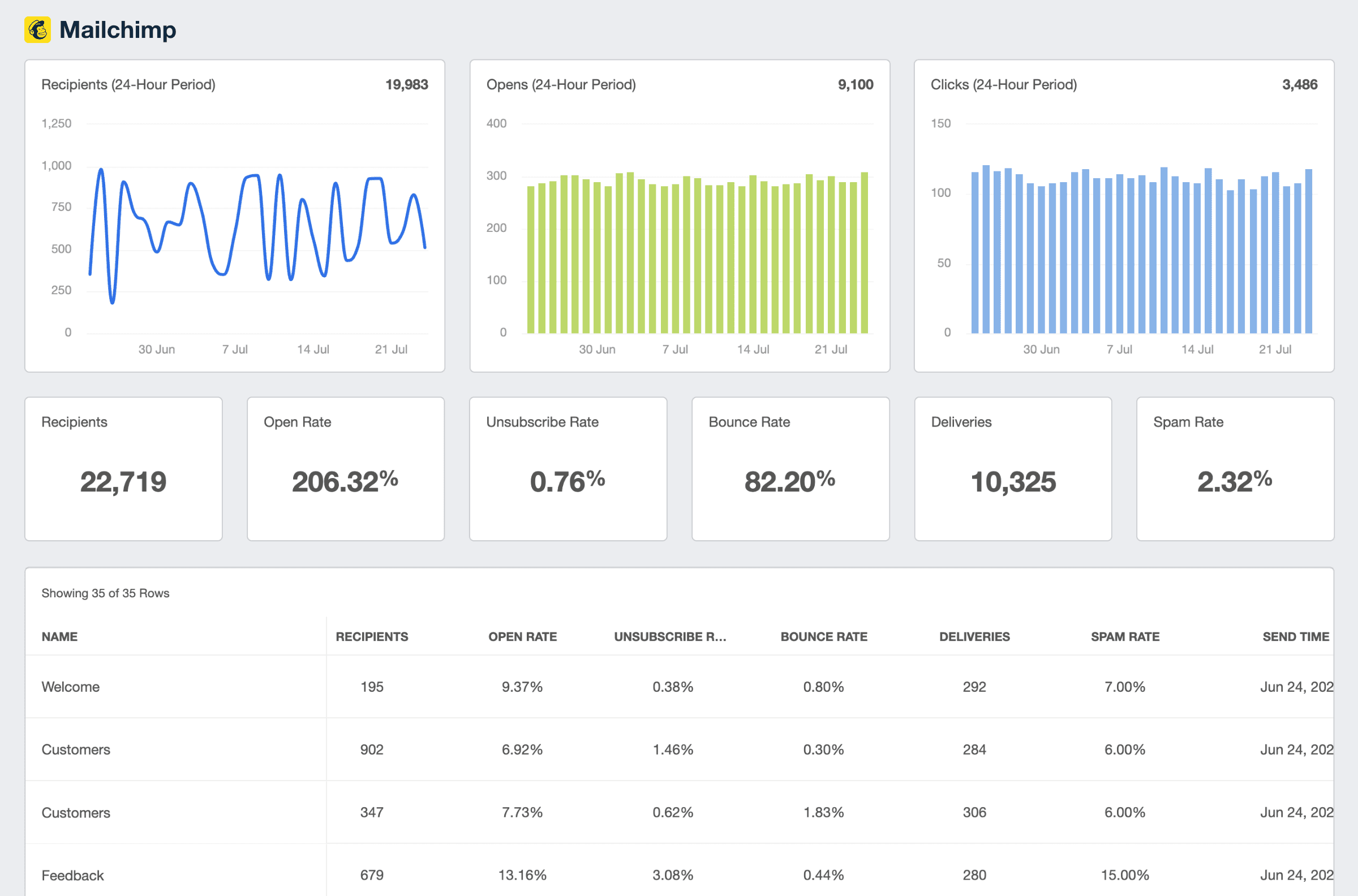
Related Integrations
How To Improve Email Bounce Rate
Lowering the Email Bounce Rate is essential for effective email marketing so it lands in as many inboxes as intended.
Regular List Cleaning
Regularly clean email lists by removing invalid or inactive addresses. This ensures that the emails reach genuine recipients.
Double Opt-In
Implement a double opt-in process to confirm email subscriptions. This reduces the chances of fake or mistyped email addresses on the lists.
Maintain Sender Reputation
A good reputation aids in better email deliverability. Manage the send frequency, avoid spam complaints, and ensure that emails are not consistently marked as spam.
Related Blog Posts
See how 7,000+ marketing agencies help clients win
Free 14-day trial. No credit card required.



